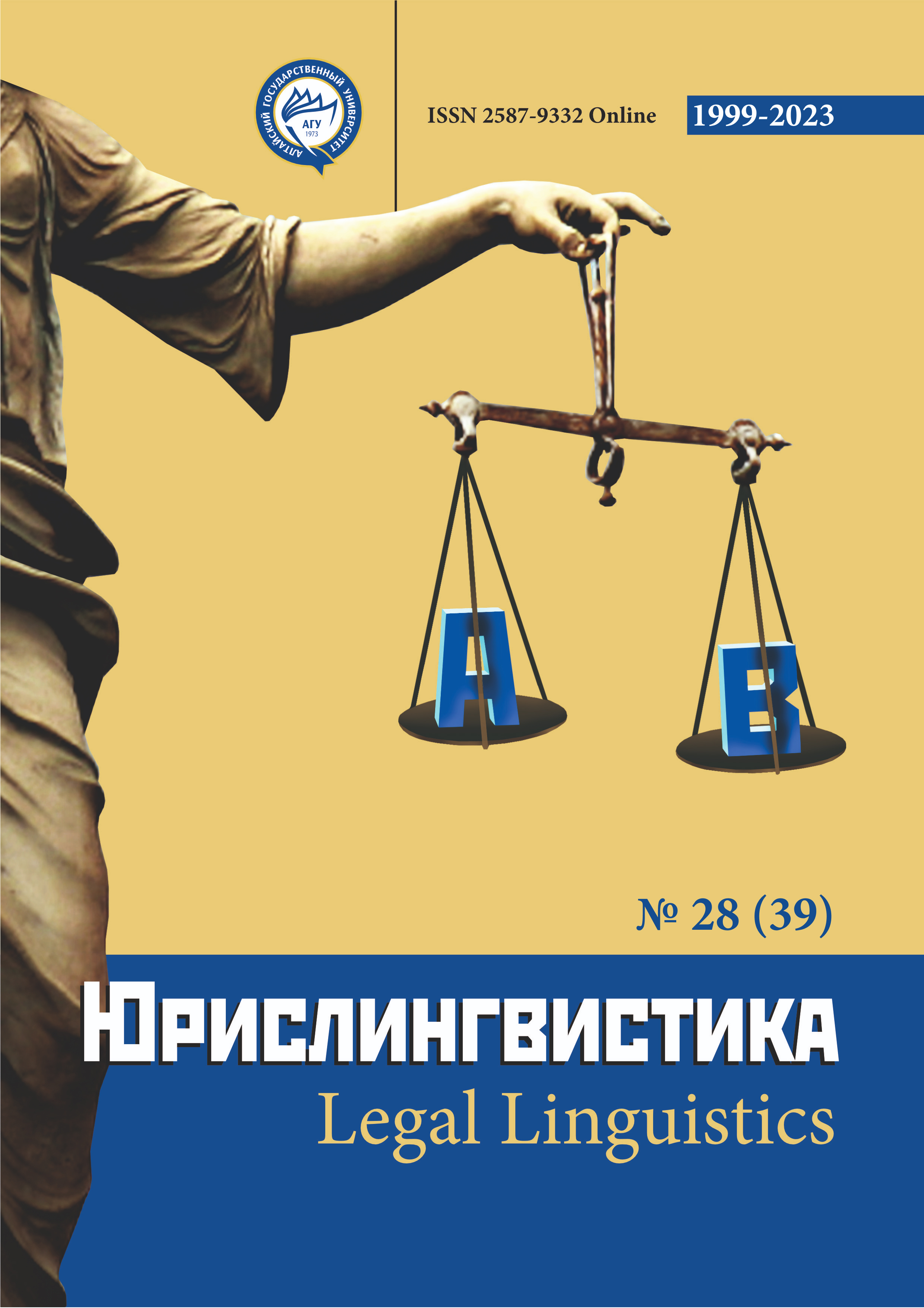On the Concept of Extremism
УДК 340, ББК 67.0
Abstract
The article discusses the analysis of approaches to the definition of the concept of “extremism”. The relevance of the study is predetermined by the importance of the qualitative organization of work to counter extremist activity, while the ambiguity of the meaning put into the concept of “extremism” gives rise to problems of qualifying certain actions (inactions) as extremist. The research methodology includes general methods of scientific research – systemic, logical, historical, as well as special methods, including the formal legal method, which allows for a contextual analysis of the legal meaning of the term “extremism”. An extensive methodology, theoretical and empirical foundations of the study made it possible to compare and generalize various views on the essence of extremism. The authors identify three dimensions in which it is proposed to explore the term under study: philosophical, socio-political, legal. The generalizing signs of extremism are indicated, the main of which is “extremism” in its many manifestations. The problems of type diversity of extremist activity are emphasized, in connection with which, it is concluded that it is impossible to build an exhaustive qualification of types of extremist activity by content. In addition, the article touches upon the problem of the essence of digital extremism as a currently popular social phenomenon on the example of the analysis of recent judicial practice. Finally, the authors come to the conclusion that the difficulties in understanding extremism are predetermined by the fact that the studied phenomenon itself is a complex of contradictions that arise between the individual, society and the state.
Downloads
Metrics
References
Афанасьев Н. Н. Идеология терроризма / Социально-гуманитарные знания. – 2002. – № 1. – С. 230–234.
Воронцов С. А. Понятие экстремизма и его сущностные признаки / Философия права. – 2007. – № 4. – С. 65–71.
Голяндин Н. П., Горячев А. В. Мотивации вербовки в экстремистские и террористические организации / Вестник Краснодарского университета МВД России. – 2013. – №2. – С. 37–40.
Даль В. И. Иллюстрированный толковый словарь русского языка. М., 2007.
Макаров Н. Е. Политический экстремизм как радикальная модель политического процесса и организация государственного противодействия экстремизму: дис. … канд. полит. наук. Чита, 2006.
О противодействии экстремистской деятельности : федеральный закон от 25.07.2002 №114-ФЗ / Собрание законодательства РФ, 29.07.2002, №30, С. 3031.
Ожегов С. И., Шведова Н. Ю. Толковый словарь русского языка. М., 1993.
Погорельцев В. И. Зарождение и развитие экстремизма в мире и в России / Международный журнал гуманитарных и естественных наук. – 2020. – 3-2 (42) – С. 178–184.
Решение Тверского районного суда города Москвы от 21 марта 2022 года по делу №02-2473/2022 URL: https://mos-gorsud.ru/rs/tverskoj/services/cases/civil/details/de7ea6a0-a3ab-11ec-8a7e-51b31fb55b35 (дата обращения: 03.08.2022).
Фридинский С. Н. Экстремизм как угроза национальной безопасности / Современные проблемы совершенствования законодательного обеспечения глобальной и национальной безопасности, эффективного противодействия международному терроризму: сб. мат. междунар. науч.-практич. конф. Ростов-н/Д., 2003.
Фридинский С. Н. Борьба с экстремизмом: уголовно-правовой и криминологический аспекты. Ростов-н/Д., 2004.
Шут О. А. Экстремизм в цифровом пространстве социальных сетей: способы совершения и детерминанты / Вестник Омского университета. Серия «Право». – 2021. – 18(1). – С. 96–102.
Экстремизм и терроризм в киберпространстве: угрозы миру и безопасности человечества: сборник статей по итогам III Всероссийской студенческой научнопрактической очно-заочной видеоконференции / под ред. В. А. Мазурова, М. А. Стародубцевой. Барнаул, 2020.
Copyright (c) 2023 Юлия Вадимовна Печатнова, Мария Стародубцева, Антон Пинчук

This work is licensed under a Creative Commons Attribution 4.0 International License.
The authors, which are published in this journal, agree to the following conditions:
1. Authors retain the copyright to the work and transfer to the journal the right of the first publication along with the work, at the same time licensing it under the terms of the Creative Commons Attribution License, which allows others to distribute this work with the obligatory indication of the authorship of this work and a link to the original publication in this journal .
2. The authors retain the right to enter into separate, additional contractual agreements for the non-exclusive distribution of the version of the work published by this journal (for example, to place it in the university depository or to publish it in a book), with reference to the original publication in this journal.
3. Authors are allowed to post their work on the Internet (for example, in a university repository or on their personal website) before and during the review process of this journal, as this may lead to a productive discussion, as well as more links to this published work (See The Effect of Open Access).











